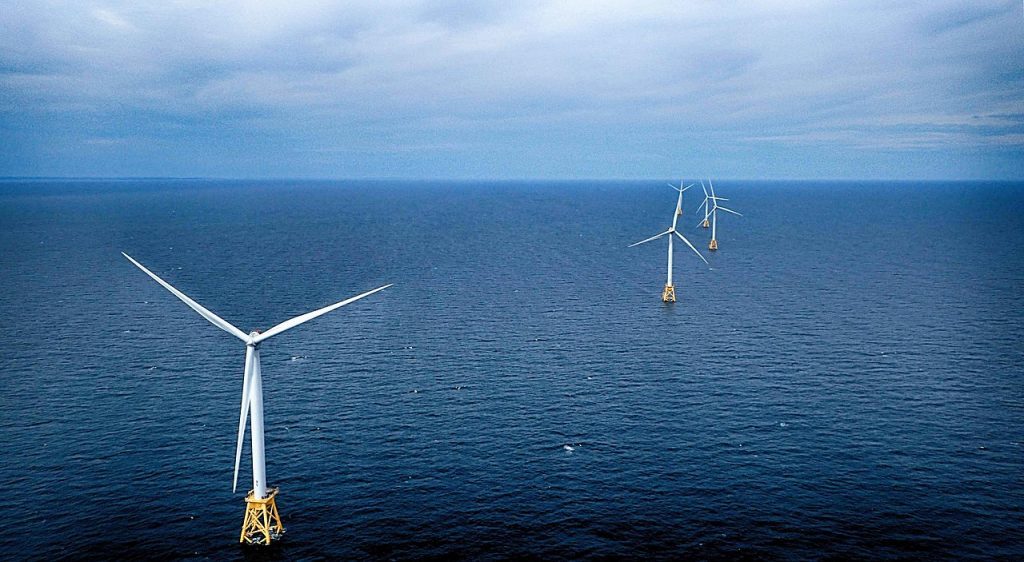
An overhead view of wind turbines at the Block Island Wind Farm off Rhode Island. (Photo credit: Creative Commons)
What is offshore wind?
As we move toward a future free of fossil fuels, developers are tapping into wind as a prevalent form of renewable energy. Large turbines placed in locations with frequent or steady winds can capture wind energy, converting it to electricity. Europe leads the world in use of this renewable resource, with wind farms—collections of turbines—located not only on land but also in shallow water near coastlines. Wind farms situated on land are called “onshore” and those sited in the water are “offshore.” Asia and North America also have wind farms, and the number of offshore sites on these continents is small but growing.
Harnessing the wind’s energy requires massive turbines with a blade diameter of 30 to 170 meters (98 to 558 feet). Winds turn the blades, causing a rotor inside the turbine to spin. This powers a generator that pumps electricity into the power grid. Onshore wind farms are located in areas with frequent winds, but winds on land vary greatly throughout the day and night, limiting the amount of electricity that can be generated. Ideal locations for onshore wind farms are often far from cities where electricity is needed, adding an additional complication. People who do live near wind farms may complain about the look and sound of the turbines.
One solution, then, is to install wind farms offshore in areas near large coastal cities. These turbines may be in relatively shallow waters just a few kilometers from the shoreline, but recent installations have increased those distances. This decreases their visibility from the shoreline, addressing people’s issues regarding the scenic viewshed.
More importantly, offshore wind has the potential to generate far more electricity than onshore setups. Winds blow regularly along the ocean’s surface, creating a more consistent supply of energy, and offshore winds typically blow harder than those on land. Small increases in wind speed have a large impact on the amount of electricity generated. Increasing wind speed from 14 to 16 miles per hour will generate 50% more electricity, making offshore wind farms an ideal way to power coastal cities and towns. Larger turbines also generate more electricity than smaller ones. Offshore wind turbines can be much larger than those on land because of the large areas available in the ocean. Turbines can be assembled at the dock, then transported by boats for installation in remote locations, whereas the size of turbines on land is restricted by rail and road limitations.
Why is offshore wind important?
The Paris Agreement sets a worldwide carbon output goal of net zero by 2050. In 2019, one-quarter of all U.S. greenhouse gas emissions came from the power sector, and offshore wind has the potential to greatly reduce the amount of carbon dioxide released into the atmosphere. The gains are substantial: In 2020, global use of offshore wind reduced carbon output by more than 27 million tons of carbon dioxide per year relative to use of fossil fuels to generate electricity.
What role do scientists have in developing offshore wind?
Although private companies are responsible for most offshore wind development, scientists can provide important tools and data to support those development efforts, as well as monitor the impact of wind farms once they are installed. Turbines placed in relatively shallow waters offshore must withstand significant forces: currents, large waves generated by storms, and occasional hurricane-force winds.
Much wind-harnessing technology has been developed in Europe, but conditions along the coastal U.S. are quite different from those that are east of the Atlantic, which necessitates additional innovation. Data on wind speed and air turbulence can inform developers of the best locations to install wind farms and how to arrange individual turbines in a wind farm to maximize their ability to generate electricity. WHOI scientists have developed a laser-based device called Wind Cube that measures air movement to provide a fine-scale model of air movement. Such data can inform wind farm developers, to help them choose the best sites for installation.
Turbines must also be anchored to the seafloor in a way that ensures they stay in place despite extreme conditions. Installation is a noisy affair. The base for each turbine must be driven up to 20 meters (65.6 feet) into the seafloor with a pile-driver. The resulting noise can interfere with sea animal communication, and an intimate understanding of when and how these animals use the area is essential to reducing harm. Marine biologists work with developers to help mitigate the impacts of installations on marine life.
Additionally, objects below the seafloor, such as boulders, can stop pile-drivers from going deep enough. Scientists are developing new ways of detecting subsurface boulders and other obstacles that could delay construction and increase costs. Collaborations between private developers and scientists can ensure the most cost-efficient, environmentally sound installations as we move toward a wind-powered future.
Bodini, N. et al. Offshore wind turbines will encounter very low atmospheric turbulence. Journal of Physics: Conference Series 1452. 2020. doi:10.1088/1742-6596/1452/1/012023
Díaz, H. and C. Guedes Soares. Review of the current status, technology and future trends of offshore wind farms. Ocean Engineering. Vol. 209. August 1, 2020. doi: 10.1016/j.oceaneng.2020.107381.
Drollette, Jr., D. Offshore wind: Poised for the big time. An interview with Anthony Kirincich. Bulletin of the Atomic Scientists. November 15, 2021. https://thebulletin.org/premium/2021-11/offshore-wind-poised-for-the-big-time-an-interview-with-anthony-kirincich/
Lubofsky, E. Harnessing the Power. Oceanus. February 6, 2019. https://www.whoi.edu/oceanus/feature/harnessing-the-power/
All Topics on Offshore Wind
FAQs about offshore wind and whales
Learn how researchers study offshore wind, whale deaths, and climate change—separating fact from fiction to help protect marine life while supporting clean energy.

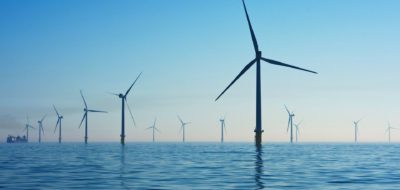
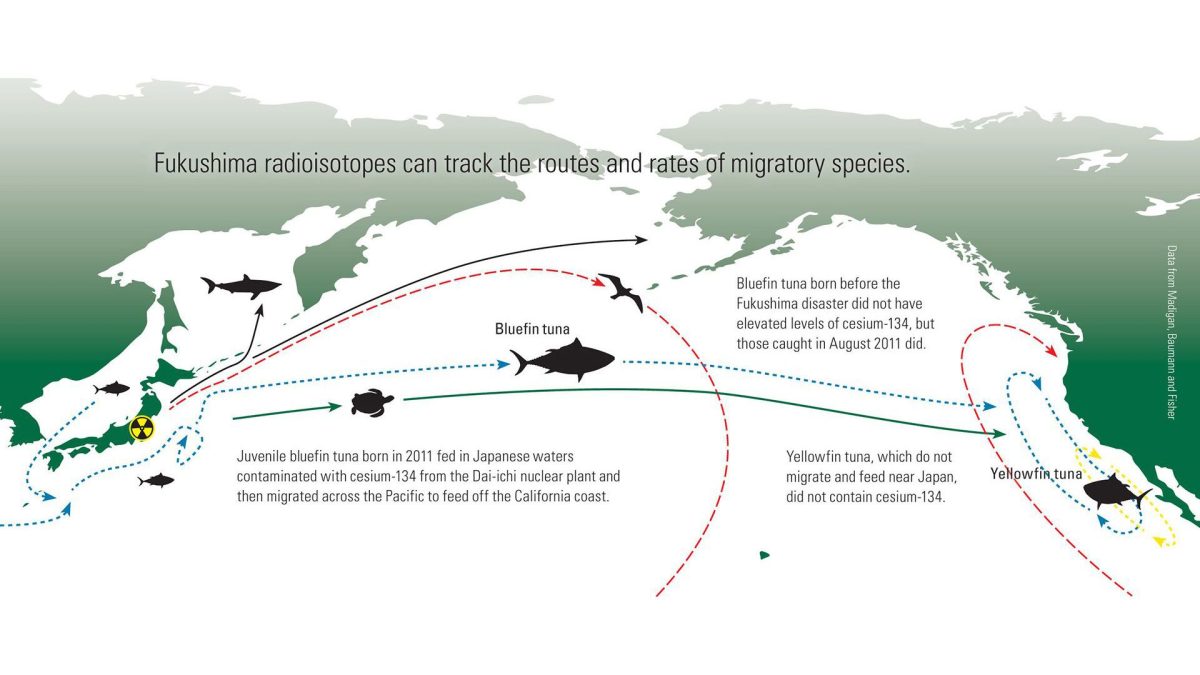
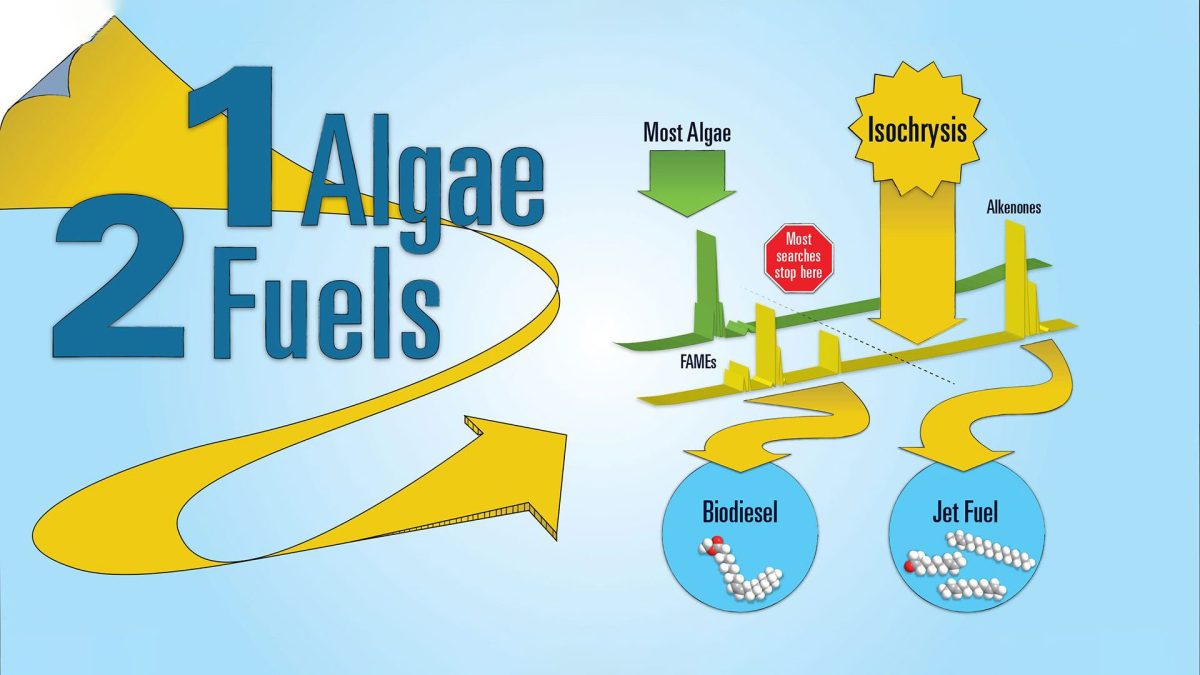

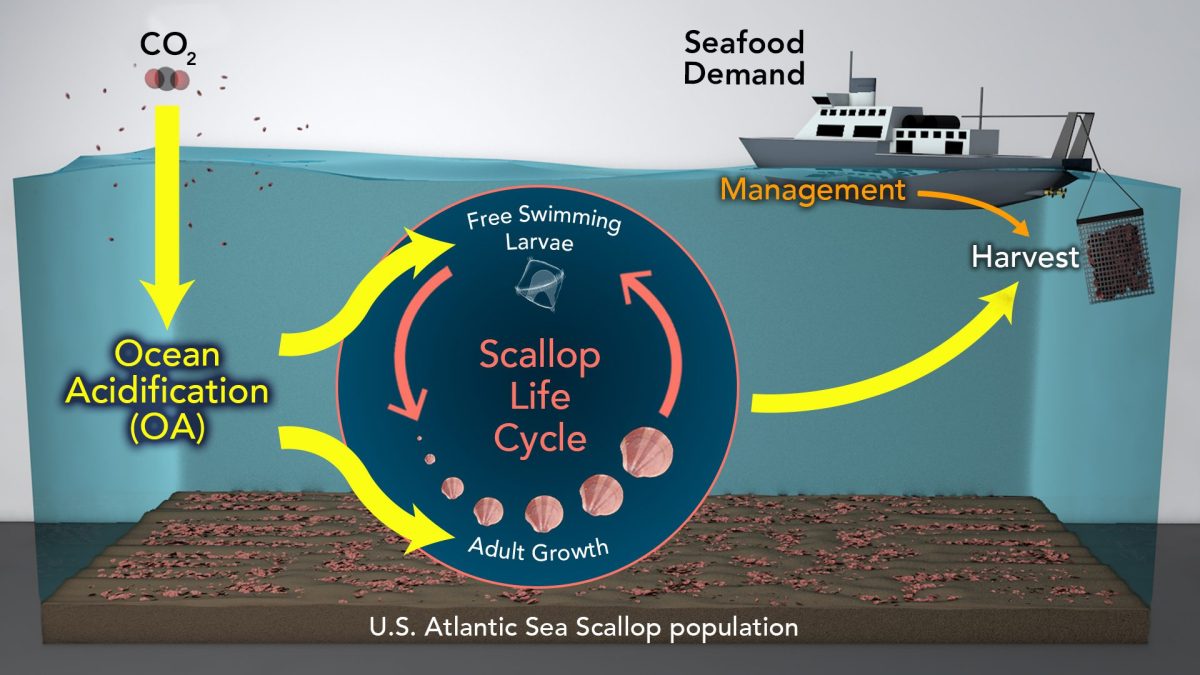
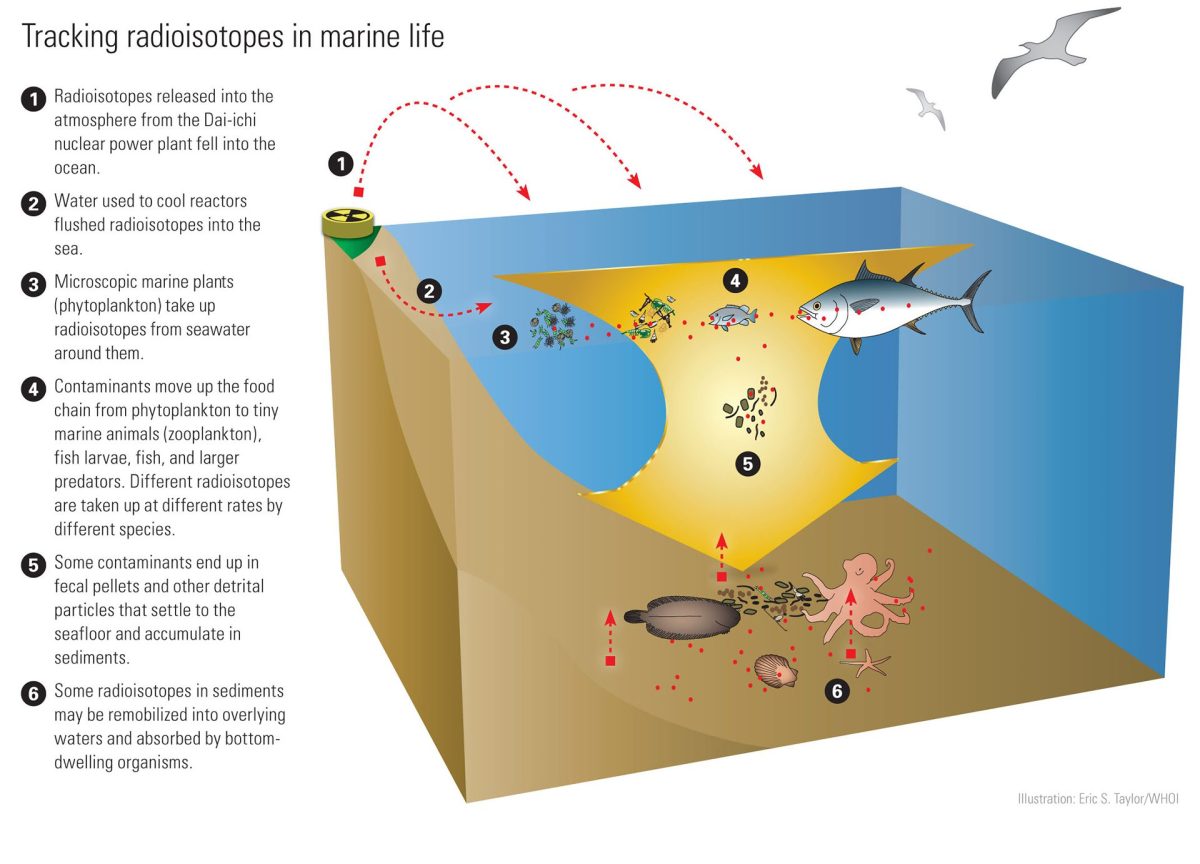
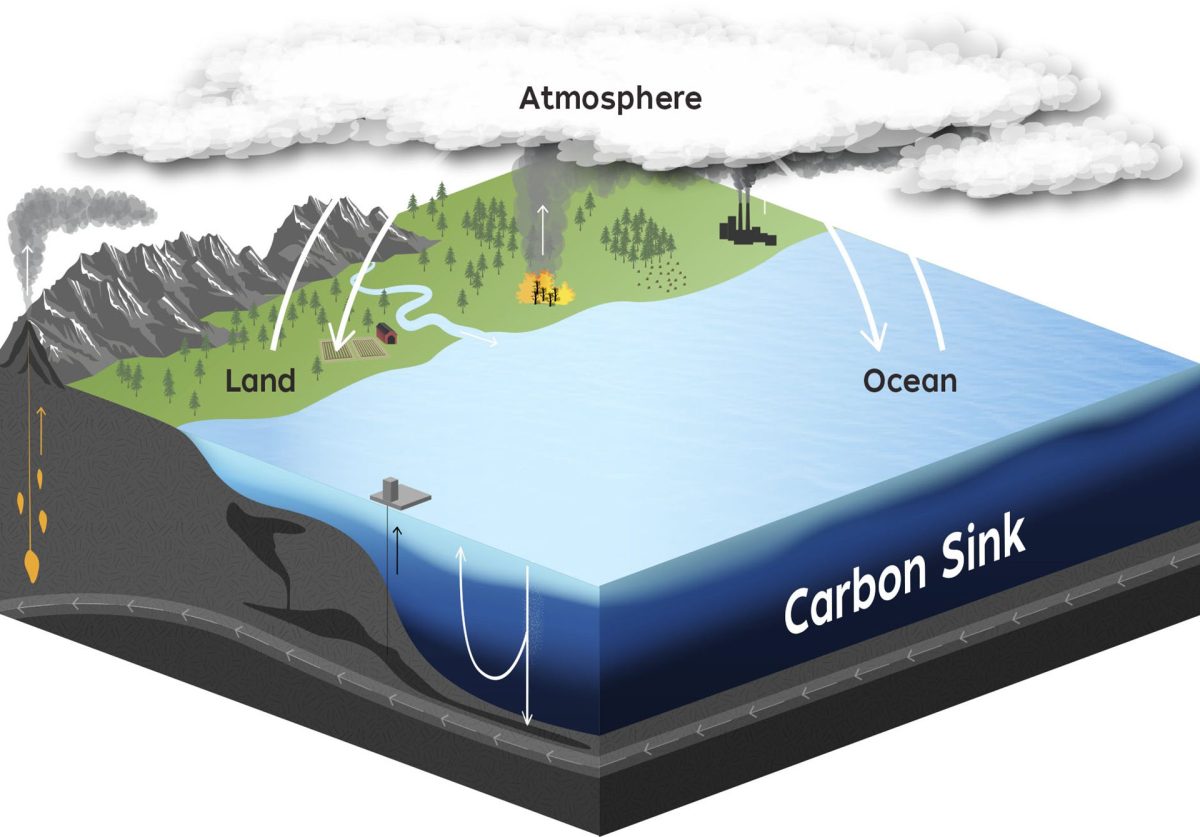
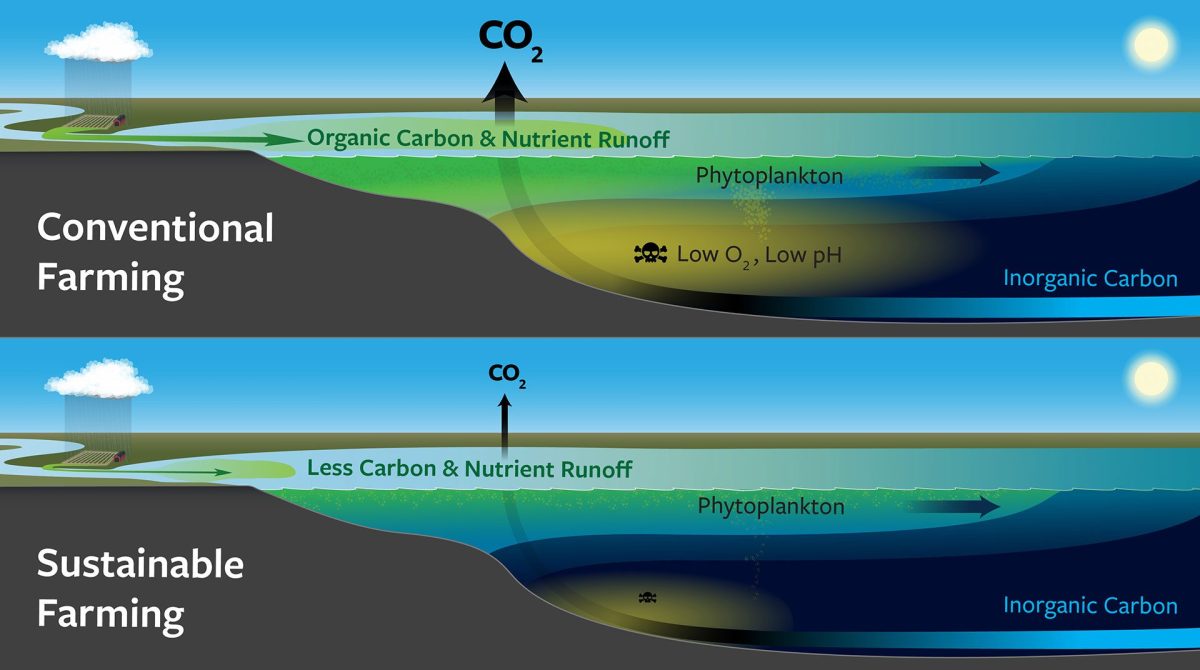
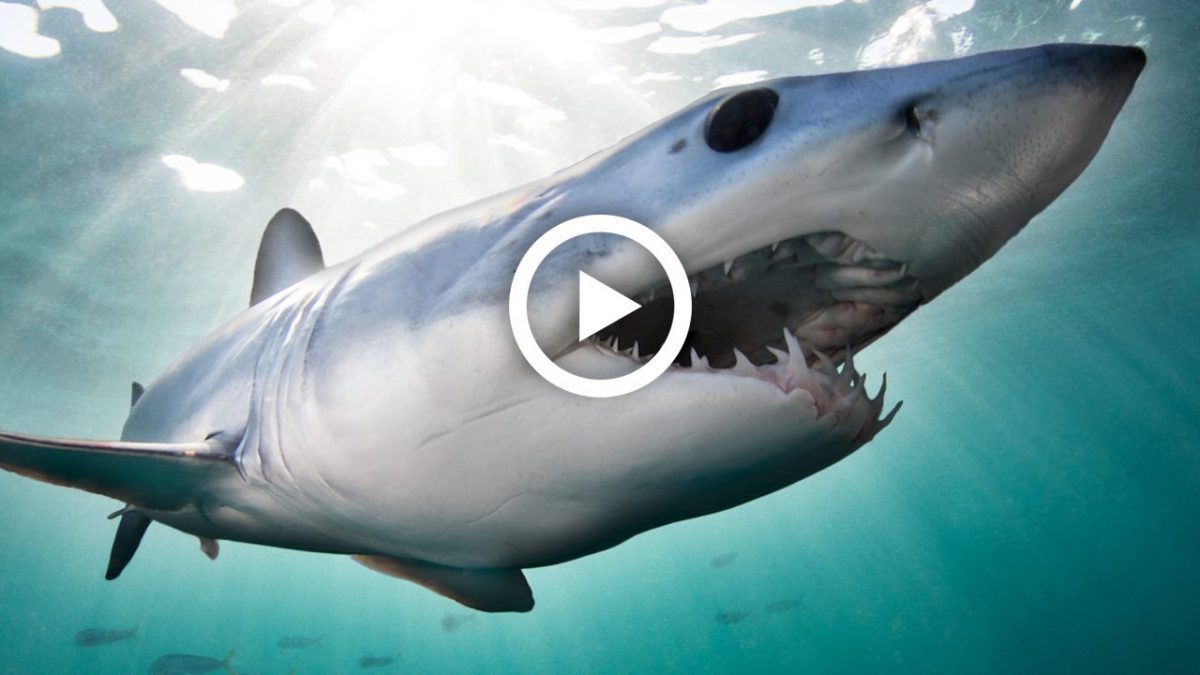
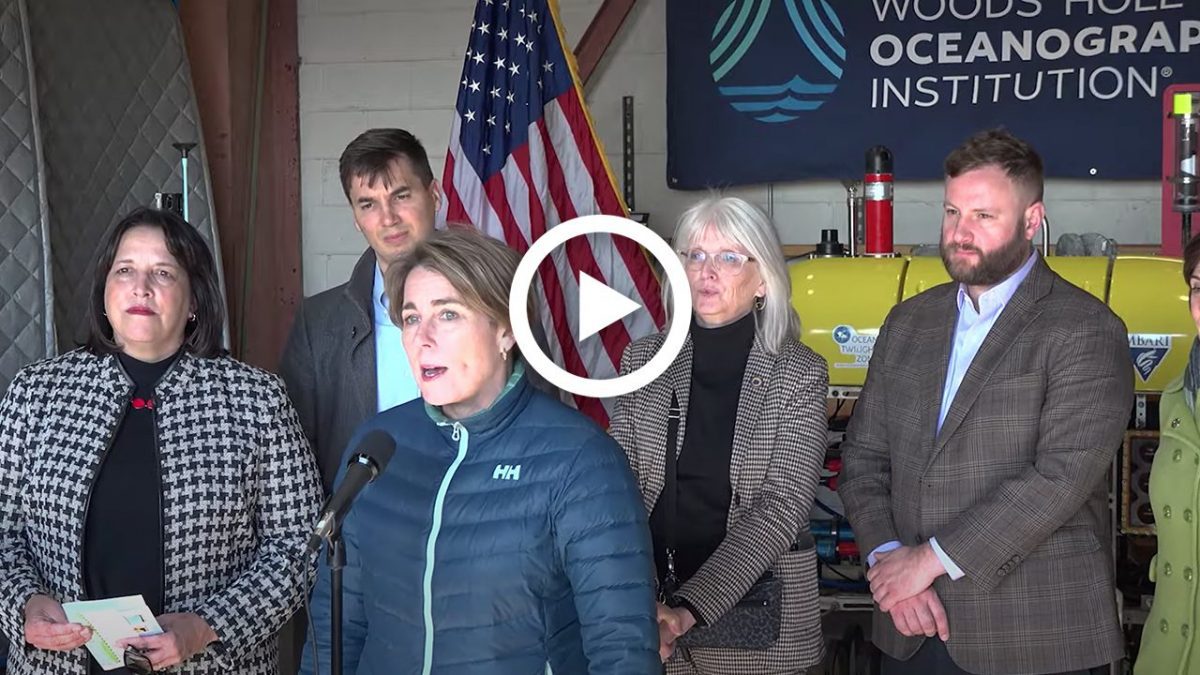
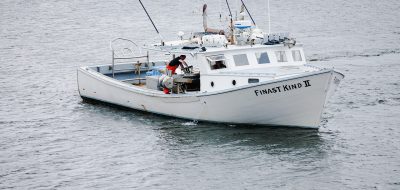
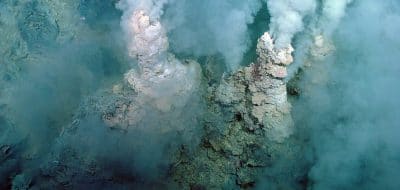
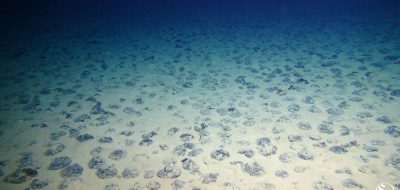
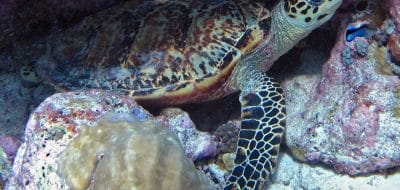
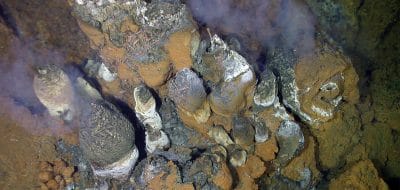
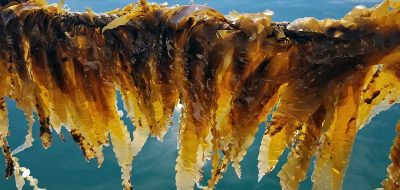
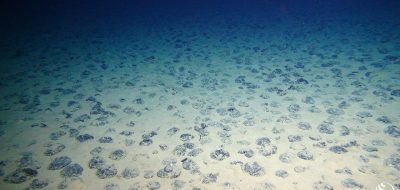
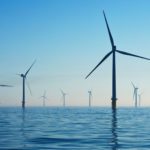 FAQs about offshore wind and whales
FAQs about offshore wind and whales